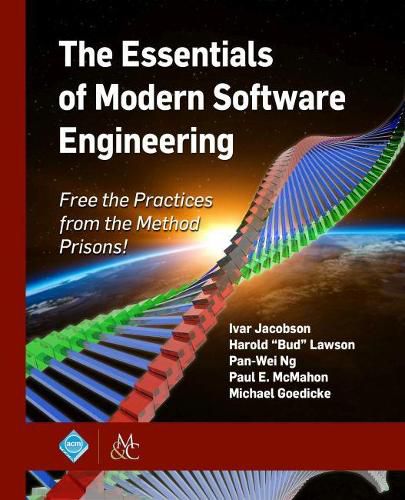Readings Newsletter
Become a Readings Member to make your shopping experience even easier.
Sign in or sign up for free!
You’re not far away from qualifying for FREE standard shipping within Australia
You’ve qualified for FREE standard shipping within Australia
The cart is loading…






This title is printed to order. This book may have been self-published. If so, we cannot guarantee the quality of the content. In the main most books will have gone through the editing process however some may not. We therefore suggest that you be aware of this before ordering this book. If in doubt check either the author or publisher’s details as we are unable to accept any returns unless they are faulty. Please contact us if you have any questions.
The first course in software engineering is the most critical. Education must start from an understanding of the heart of software development, from familiar ground that is common to all software development endeavors.
This book is an in-depth introduction to software engineering that uses a systematic, universal kernel to teach the essential elements of all software engineering methods.
This kernel, Essence, is a vocabulary for defining methods and practices. Essence was envisioned and originally created by Ivar Jacobson and his colleagues, developed by Software Engineering Method and Theory (SEMAT) and approved by The Object Management Group (OMG) as a standard in 2014. Essence is a practice-independent framework for thinking and reasoning about the practices we have and the practices we need. Essence establishes a shared and standard understanding of what is at the heart of software development.
Essence is agnostic to any particular method, lifecycle independent, programming language independent, concise, scalable, extensible, and formally specified. Essence frees the practices from their method prisons.
The first part of the book describes Essence, the essential elements to work with, the essential things to do and the essential competencies you need when developing software. The other three parts describe more and more advanced use cases of Essence. Using real but manageable examples, it covers the fundamentals of Essence and the innovative use of serious games to support software engineering. It also explains how current practices such as user stories, use cases, Scrum, and micro-services can be described using Essence, and illustrates how their activities can be represented using the Essence notions of cards and checklists. The fourth part of the book offers a vision how Essence can be scaled to support large, complex systems engineering.
Essence is supported by an ecosystem developed and maintained by a community of experienced people worldwide. From this ecosystem, professors and students can select what they need and create their own way of working, thus learning how to create ONE way of working that matches the particular situation and needs.
$9.00 standard shipping within Australia
FREE standard shipping within Australia for orders over $100.00
Express & International shipping calculated at checkout
This title is printed to order. This book may have been self-published. If so, we cannot guarantee the quality of the content. In the main most books will have gone through the editing process however some may not. We therefore suggest that you be aware of this before ordering this book. If in doubt check either the author or publisher’s details as we are unable to accept any returns unless they are faulty. Please contact us if you have any questions.
The first course in software engineering is the most critical. Education must start from an understanding of the heart of software development, from familiar ground that is common to all software development endeavors.
This book is an in-depth introduction to software engineering that uses a systematic, universal kernel to teach the essential elements of all software engineering methods.
This kernel, Essence, is a vocabulary for defining methods and practices. Essence was envisioned and originally created by Ivar Jacobson and his colleagues, developed by Software Engineering Method and Theory (SEMAT) and approved by The Object Management Group (OMG) as a standard in 2014. Essence is a practice-independent framework for thinking and reasoning about the practices we have and the practices we need. Essence establishes a shared and standard understanding of what is at the heart of software development.
Essence is agnostic to any particular method, lifecycle independent, programming language independent, concise, scalable, extensible, and formally specified. Essence frees the practices from their method prisons.
The first part of the book describes Essence, the essential elements to work with, the essential things to do and the essential competencies you need when developing software. The other three parts describe more and more advanced use cases of Essence. Using real but manageable examples, it covers the fundamentals of Essence and the innovative use of serious games to support software engineering. It also explains how current practices such as user stories, use cases, Scrum, and micro-services can be described using Essence, and illustrates how their activities can be represented using the Essence notions of cards and checklists. The fourth part of the book offers a vision how Essence can be scaled to support large, complex systems engineering.
Essence is supported by an ecosystem developed and maintained by a community of experienced people worldwide. From this ecosystem, professors and students can select what they need and create their own way of working, thus learning how to create ONE way of working that matches the particular situation and needs.